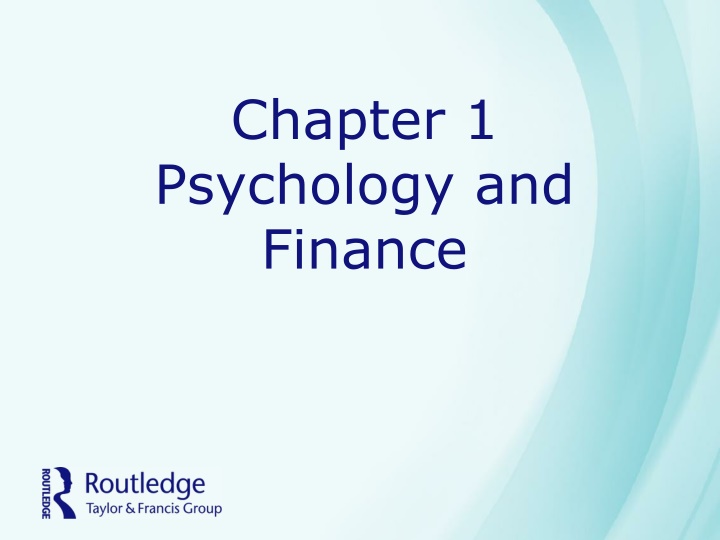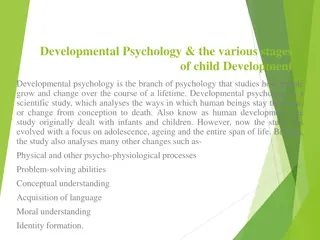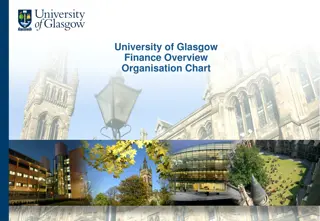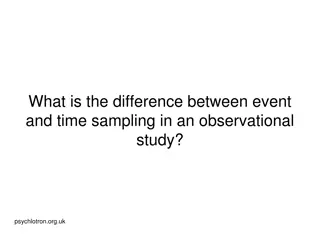
Exploring the Intersection of Psychology and Finance
This presentation delves into the relationship between psychology and finance, challenging the notion of complete rationality in traditional financial behavior. Through thought-provoking questions and insights, it highlights the common tendencies of overconfidence and the desire for accuracy in predicting outcomes. The content also touches on historical facts and invites readers to consider the impact of dividend reinvestment on the Dow Jones Industrial Average.
Download Presentation

Please find below an Image/Link to download the presentation.
The content on the website is provided AS IS for your information and personal use only. It may not be sold, licensed, or shared on other websites without obtaining consent from the author. If you encounter any issues during the download, it is possible that the publisher has removed the file from their server.
You are allowed to download the files provided on this website for personal or commercial use, subject to the condition that they are used lawfully. All files are the property of their respective owners.
The content on the website is provided AS IS for your information and personal use only. It may not be sold, licensed, or shared on other websites without obtaining consent from the author.
E N D
Presentation Transcript
Chapter 1 Psychology and Finance
Traditional Finance Academics and Traditional Finance Investors Behave Rationally! Complete Exploitation of Information Sound Reasoning People are Unbiased in Their Predictions About the Future 2
Consider this example. Answer each question: Provide range within which you are 90% sure the answer will be. You should expect to get 9 of the 10 questions correct. 3
Answers 1. What is the average weight, in pounds, of the adult blue whale? 250,000 pounds 2. In what year was the Mona Lisa painted by Leonardo da Vinci? 1513 3. How many countries were members of the United Nations in 2012? What is the air distance, in miles, between Paris, France, and Sydney, Australia? How many bones are in the human body? 193 countries 4. 10,543 miles 5. 206 bones 6. How many total combatants were killed in World War I? 8.3 million Continued 5
Answers 7. How many items (books, manuscripts, microforms, sheet music, etc.) were listed in the U.S. Library of Congress at the end of 2010? How long, in miles, is the Amazon River? 4,000 miles How fast does the earth spin (miles per hour) at the equator? 164 million items 8. 9. 1,044 mph 10. How many earthquakes per year does the National Earthquake Information Center locate and publish information about, globally? 20,000 earthquakes 6
How many did you get? People often miss many, or even all ten Overconfident about level of knowledge Desire to be accurate Range is too narrow Usually the higher number is too low Misses are predictable! 7
One more question On October 1, 1928, the modern era began for the Dow Jones Industrial Average (DJIA) began when the component list was expanded to 30 from 20 stocks, and several substitutions were made. A divisor was also introduced to adjust for the effect of stock splits, stock distributions, and stock substitutions. In 1929, the year began with the DJIA at 300. At the end of 2016, the DJIA was at 19,787. The DJIA is a price-weighted average. Dividends are omitted from the index. What would the DJIA average be at the end of 2016 if dividends were reinvested each year? 8
If dividends were reinvested in the DJIA, the average would have been 613,514 at the end of 2016! Were you right? N = 88 PV = -300 PMT = 0 FV = 613,514 I/Y = 9.05% Anchoring Mental attachment to a specific number or price People tend to anchor on the current DJIA and try to add an appropriate amount. 9
Economic Decision-making Involves Analytics and Emotions 10
Prospect Theory Investors tend to frame investment choices in terms of potential gains and losses relative to a specific reference point according the S-shaped value function:
Law of Small Numbers People put too much emphasis on a small sample as if it represents the population. Flipping a coin, outcome is: H, H, H Since we know that the coin is fair and must be 50/50 Heads versus Tails in the long run, we tend to believe that there is a greater chance that the next flip will be Tails. (gambler s fallacy) Continued
Law of Small Numbers The lottery People know that each of the numbers must be picked about the same amount of times in the long run. Erroneous believe that the numbers that have not been pick very frequently are more likely to be picked now All numbers still have the same chance of being picked. Many people pick these numbers If they won, winners would have to share with all of those people suffering from the bias Pick the numbers that have been most frequently picked, and likely not have to share the winnings!
The Stock Market Belief in the law of small numbers works differently in the stock market. We don t believe the underlying probability of each stock doing well is equal. Indeed, we think some stocks will do better than others. But, we don t think stock price moves will reverse, instead we think they represent the underlying return distribution and thus will continue.
What to Expect Chapters 2 through 4 demonstrate how investment decision making is affected by emotions and framing. The self-deception of overconfidence is discussed in Chapter 2. Chapter 3 illustrates how investors views of themselves cause them to avoid feelings of regret and instead seek pride. Chapter 4 demonstrates investors perceptions of risk and how they change from time to time and from analysis to analysis. Continued 15
What to Expect Chapters 5 through 8 demonstrate how heuristic simplification affects the investor. Chapter 5 illustrates that how a question is framed will nudge you to a specific decision. Chapter 6 shows that people make poor financial decisions as a consequence of mental accounting. Discussed in Chapter 7 is one particularly important implication how investors view portfolio diversification. The brain also uses shortcuts to process information quickly. These shortcuts create a tainted view of the information. This leads to the problems of representativeness and familiarity for the investor, as discussed in Chapter 8. Continued 16
What to Expect Chapter 9 discusses how investing has entered our social culture. The interaction between psychology, group psychology, and investing can contribute to market mania and price bubbles. Chapter 10 focuses on the role of emotions and mood in the decision- making process. An investor s general level of optimism or pessimism influences his or her trading decisions. Chapter 11 discusses the difficulty of maintaining self-control in the face of these psychological biases. Planning, incentives, and rules of thumb are helpful in avoiding common problems. This chapter also describes programs that are designed using people s biases to help them save more. 17
What to Expect Chapter 12 illustrates the role biology plays in investment and savings behavior. In this new and exciting field, scholars are learning how genetics, gender, hormones, physiology, and cognitive aging drive investment preferences. Neuroscience is also showing us what happens in the brain during investment decision making. There is an age-old question that asks whether a person s behavior stems from nature or nurture. This chapter shows that at least some of it is driven by nature. 18
What to Expect Chapter 13 describes the short squeeze of the meme stock GameStop. Meme investor coordinated their trading through a Reddit social media platform. In just three weeks, the stock price rose from $19 to $483. Hedge funds shorting the stock lost billion of dollars. There is much behavioral and emotional behavior to discuss. 19
Summary Most formal finance education centers on traditional finance concepts. However, psychology plays a large role in financial decision-making. This book demonstrates how cognitive errors, heuristics, psychological biases, and emotions influence an investor s decisions. Unfortunately, these psychology induced decisions create outcomes that often have negative impacts on wealth. 20






















